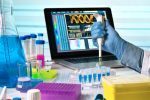The Moments From My Childhood When I Realized I Was Different

Sickle cell disease is considered a rare condition. In the U.K., where I live, an estimated 15,000 people have it. In a population of over 66 million, it’s safe to say that my chances of meeting other people with sickle cell are extremely low.
As a child, not many people could relate to the things I was going through. I was taught to keep matters concerning my health on the down-low; people only knew about my health if they needed to.
When I was around 6 or 7, this meant I was practically living two different lives. At that age, I didn’t have a full understanding of what sickle cell was. I mostly just knew what I had to do to prevent a crisis from occurring. However, a few moments stuck out to me because they highlighted the fact that I was not like my peers.
My earliest memory of noticing this difference was in primary school. During a science lesson, my teacher asked the class to name medications. The first medicines listed were generic painkillers, such as paracetamol and ibuprofen. However, when it was my turn, I decided to name a medicine that was very familiar to me but unknown to my class. I said naproxen, which is a nonsteroidal anti-inflammatory drug that many sickle cell patients use as a form of pain relief. The whole class looked at me like I was speaking another language. I was pretty embarrassed.
During primary school, it was a general rule that whenever it was cold, raining, or snowing, I had to stay indoors to keep warm. That rule led to my first proper understanding of sickle cell and how it affects the body.
I remember wanting to go to a sleepover when I was 10. My parents were willing to let me go on the condition that I take water with me, and finish the bottle before I returned the following day. When I finished packing, my mum showed me a carrier bag filled with 32 500-mL water bottles, all of which I had to empty. This seemed excessive to me, especially as there would be water at my friend’s house, but it highlighted to me that I had to be more intentional with my water intake. I could not afford to be careless; I had to avoid becoming dehydrated. My mum knew that if left to my own devices, I’d get carried away, so she had to keep me accountable. Her tactic worked like a charm!
These are some of the moments from my childhood that really stuck with me. Little moments like these really define what it means to have an invisible disease.
If you have sickle cell, have you experienced a moment that highlighted the differences between you and those without sickle cell? Feel free to share an example in the comments below.
***
Note: Sickle Cell Disease News is strictly a news and information website about the disease. It does not provide medical advice, diagnosis, or treatment. This content is not intended to be a substitute for professional medical advice, diagnosis, or treatment. Always seek the advice of your physician or other qualified health provider with any questions you may have regarding a medical condition. Never disregard professional medical advice or delay in seeking it because of something you have read on this website. The opinions expressed in this column are not those of Sickle Cell Disease News or its parent company, Bionews, and are intended to spark discussion about issues pertaining to sickle cell disease.








Adebayo Samuel
This is amazing Tito.... Reminds me of when i was so little, didn't want to admit i was sickle cell, was doing so many things, a sickle cell patient shouldn't... But now i know more ❤️✌🏾